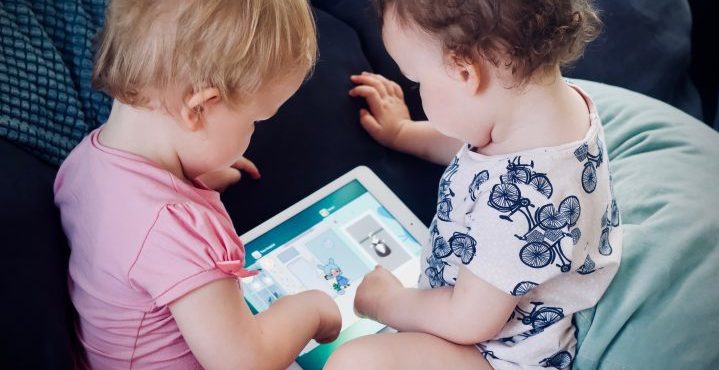Protecting Children’s Identities Online, at Home and at School
From March 2018 – 2019, there was a total of 693,418 reported fraud offences in England and Wales – 9% higher than the previous year¹. Of these cases reported, a large proportion of victims were young people. With identity theft against children and young people on the rise, we must take steps to safeguard against these types of crime, both as guardians and as educators.
An abundance of personal information about most of us is readily available online with a few clicks of a button. When updating our Instagram story, or posting a new Tweet, it can be easy to forget that information found in these updates could be used maliciously – both by strangers and by people we trust. Many people don’t realise that they could also be putting their children at risk of identity theft.
In identity theft cases where the victims are children, it is thought that 60% of thieves are known by the child or their family. The thief could be a family friend, relative, or even the parents of other schoolchildren. This is known as ‘familiar fraud’. In most familiar fraud cases, the victims are aged 7 and under².
With so much data available online and offline, safeguarding the personal data of children is more important than ever.
How are data thieves gathering personal information about children?
A common way that thieves gather information about children is through social media – specifically through ‘sharenting’³. Think for a moment about the information that you, or someone you know, shares about their child online:
- The day they were born
- Where they were born
- Their full name
- The name of their first pet
- Photographs of their first day of school, potentially featuring branded school uniform
- Mother’s maiden name, and much more.
All of the above information can be used to commit identity theft. The severity of the crime could be anything from taking out bills in a child’s name to utilise their ‘clean’ credit score, to creating fake passports. Once children grow older, this information could also be used to gain access to email accounts, bank accounts, and more.
There are other ways that identity thieves can gather information about children, too. For instance, they could coerce information from children directly by pretending to be someone they can trust. They could also attempt to access records that have not been properly disposed of. This can happen at home, at educational establishments, and everywhere in between.
So, what can be done to protect children’s identities online, at home, and in the classroom?
Be mindful of the information you share about your own, and other people’s children.
In the UK alone, there are 45 million social media users – that’s around 67% of the population⁴. Social media is a great tool to use to connect with others. However, with so much information out there across so many accounts, it’s also a prime data hunting ground for identity thieves.
When using social media, the best way you can protect yourself and young people in your life is by ensuring all of your profiles are set to private, and your posts are viewable only by people you know and trust. While this doesn’t safeguard completely against identity theft, it does reduce the risks.
Even if you’re only connected to people you believe are trustworthy, it’s good to err on the side of caution. Be careful when uploading any information that could be used to find out where you live, where your children go to school, where they were born, or any other personal data. To do so could be putting them at risk. Be especially careful when uploading photographs, as there could be sensitive data visible in the image such as addressed envelopes, road names, and more.
If your children are using social media, ensure they too are cautious with the information they share about themselves. Not only that, make sure they are cautious about the information they share about their friends. For example, your child may post a Snapchat story when having a sleepover at a friend’s house. If their geolocation data isn’t turned off, their friend could be at risk of data theft too – or worse.
 Implement privacy controls.
Implement privacy controls.
In a recent study, it was found that 78% of children had access to a tablet device at home. 42% of children even had their very own devices. These numbers have grown considerably since 2011 when just 8% of children had access to a tablet in the home, and less than 1% had their own device⁵.
But what do these findings mean?
It means, for the first time in human history, children are learning to use tablets before they can read, ride bikes, and even recognise colours. With so much technology in the grasp of such small hands, it’s more important than ever to implement privacy controls.
Guardians and schools can:
- Edit device settings to prevent in-app purchases
- Restrict screen time and app usage
- Enable parental controls and Safe Search
- Turn off location data
- Use a VPN
- Restrict websites and web searches that may put young people at risk, e.g. chat rooms
- Implement a phone collection policy, where devices are locked away during teaching hours.
A nationwide solution is also on the horizon. The ICO is setting out standards for an age-appropriate design for online services, expected to come into effect by the end of 2019. The standards will set an international benchmark for how companies process young people’s data and will be the first of its kind worldwide.
The UK’s Information Commissioner, Elizabeth Denham, said:
“Online services play an ever-growing part in our children’s lives, but the internet was not designed for children. Our code aims not to protect children from the digital world, but instead protect them within it”, adding that the new code will “help create an open, transparent and protected place for children when they are online”.

Educate children on data privacy from a young age.
Educating children about safety is nothing new. Most children will be able to tell you about stranger danger, that you should look both ways when crossing the road, and the dangers of playing with plug sockets. But if asked, how many children would know what their identity means and how to keep it safe? One of the best ways we can protect the privacy of children is through education.
There are many free resources out there specifically for children, including anti-fraud lesson plans, online awareness tools, and many educational videos.
Educating your child about what information shouldn’t be shared with others online is also important. For example, children can be at risk when using video game consoles and PCs. The world of online gaming is a world where many data thieves operate. Fortunately, there are measures you can take to protect your child when gaming, too.
There are many optional privacy settings on gaming consoles such as enabling child accounts, extra password protection and reporting features to alert platforms about any unsavoury or suspect behaviour. However, it is crucial to make your child aware of what information to keep secret from others online. Many criminals will pose as other children with the aim of building trust or social pressure. Once trust is built, they can slowly extract personal information about young people. The short video below from Common Sense Media⁶ contains five useful internet safety tips.
Another of our blog posts, Teach Your Child to Protect Themselves, may also be useful as a teaching tool to educate children about identity theft.
If we can teach our children about cybercrime, personal data, and how to recognise scams, they stand a better chance of knowing how to protect themselves – and others – in the future.
Dispose of documents safely and securely.
We also need to be careful about the way we dispose of sensitive information relating to children. Sensitive information could be contained in many forms, so be sure to be very thorough when disposing of data. We’d even recommend adopting a Shred Everything system which can be implanted at schools and at home.
Documents which may contain sensitive data about children include:
- Letters about medical and dentist appointments
- Letters from their school
- Old school books and school reports
- Old school ID cards and lanyards
- Birthday card envelopes
- Travel documents relating to your children – e.g. boarding passes.
The best way to ensure this information is secure is to have them securely destroyed by an accredited supplier. Here at Shred Station, we provide a secure data destruction service for private individuals, as well as a shredding service for schools and educational establishments.
If you’d like to know more about our shredding services, just get in touch today.
For more information about the sources cited in this article, visit the links below:
¹ – Crime Outcomes in England and Wales: Year Ending March 2019.
² – Article by CNBC: Identity Theft Isn’t Just an Adult Problem. Kids are Victims, Too.
³ – Article by BBC: Sharenting Puts Young at Risk of Online Fraud.
⁴ – We Are Social’s report: Digital in the UK.
⁵ – Common Sense Media’s study: The Common Sense Census: Media Use by Kids.
⁶ – Common Sense Media’s website: Click here for many educational tools for parents and teachers.
Sign up to our newsletter here to be alerted about new blog articles, data protection advice, and Shred Station news.
